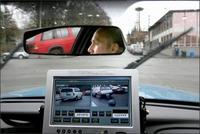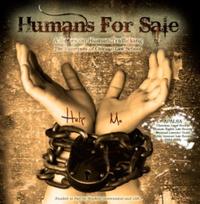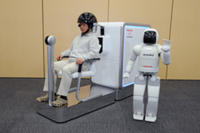-
New surveillance system: 1 second to search through 36 million faces
New surveillance camera system can search through data on thirty-six million faces in one second
-
-
California bill would restrict data usage from license plate scanners

Legislation has been introduced in California to limit the use of data gathered by patrol car-mounted license plate readers, and the duration for which such data may be held; access to the data by other agencies and personnel would be limited as well
-
-
Robot jellyfish for underwater search and rescue
Researchers have built a robotic swimmer that mimics the motion of a jellyfish; the device will because for underwater search and rescue missions
-
-
Army scientists work to improve biothreat detection
A married couple, both scientists working at the U.S. Army’s Edgewood Chemical Biological Center, one of forty-five Biosafety Level 3 labs in the United States; they collaborate on improving the ability of soldiers and first responders to detect, identify, and protect against potentially lethal biological threat agents
-
-
County experiments with new medical emergency dispatch protocol

In an effort to reduce costs and free up valuable resources, Kings County, Seattle is experimenting with a new 911 emergency call system that prioritizes emergency calls over nonemergency calls; under the new system, when residents call 911 with a serious medical emergency, the system will dispatch a fire truck or ambulance
-
-
SFO launches program to battle human traffickers

San Francisco International Airport is now home to the first program in the nation that trains airport personnel in identifying and stopping human traffickers
-
-
The Red Cross, emergency response, and Twitter
Social media has become such an integral part of our lives that emergency responders are now turning to Twitter and Facebook to gain valuable information during natural disasters or crises
-
-
Dodge Durango Special Service available for police fleets
Chrysler unveils the Dodge Durango Special Service SUV, which is specially designed to handle the rigors of everyday use by police and fire departments and fleet customers
-
-
Updated solution allows quick, secure information sharing
Visual Alert 2 enables law enforcement agencies to get real-time access to police records through Pennsylvania’s Law Enforcement Justice Information System (LEJIS) and other authorized information sharing networks while the department maintains secure control of the information it shares
-
-
Bolstering police anti-child porn technology
Microsoft Corp. and NetClean the other day announced a joint effort to combat the sexual exploitation of children by making Microsoft PhotoDNA technology available and accessible to law enforcement agencies worldwide to help enhance child sex abuse investigations
-
-
Pentagon explores mind-controlled battle robots

Taking a page from the popular movie Avatar, the military’s advanced research arm DARPA is seeking to develop technology that would allow troops to remotely inhabit the bodies of mechanical androids on the battlefield
-
-
Using people with cell phones as surveillance nodes
Eighty-eight percent of Americans now own a cell phone, forming a massive network that offers scientists a wealth of information and an infinite number of new applications; with the help of these phone users — and their devices’ cameras, audio recorders, and other features — researchers envision endless possibilities for gathering huge amounts of data
-
-
Researchers developing wireless emergency network for disasters
University of Arkansas researchers are developing a solar powered wireless emergency communications network that can be deployed during major disasters to transmit critical warnings and geographic information
-
-
DHS seeks camera that sees hundreds of kilometers at once
DHS is interested in adding powerful military technology to its growing arsenal of surveillance equipment; the agency is considering new cameras that will be able to track and monitor several moving objects simultaneously over as much as four square miles
-
-
Innovative CCTV protects copper cables
The theft of copper cables has cost the British economy an estimated £770 million a year over the last few years; British company which rely on copper cables to deliver their services are deploying an innovative CCTV to combat the thieves
-
More headlines
The long view
Why Ukraine’s AI Drones Aren’t a Breakthrough Yet
Machine vision, a form of AI, allows drones to identify and strike targets autonomously. The drones can’t be jammed, and they don’t need continuous monitoring by operators. Despite early hopes, the technology has not yet become a game-changing feature of Ukraine’s battlefield drones. But its time will come.
